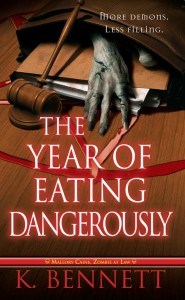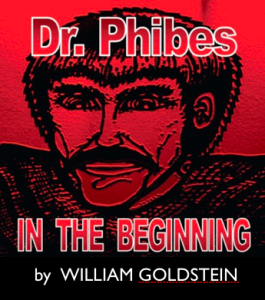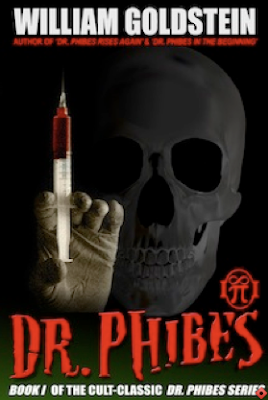Here at TKZ we sometimes joke about “shameless self-promotion.” We greatly appreciate the good rapport we have with our readers, and you all know we are not here just to plug our stuff. But you also understand that we’re working writers who blog, in part, so we can tell you about our new releases when they occur.
Every writer has to do it. Publishers and agents demand it. If you’re self-publishing, you can’t survive without some form of social media and self-promotion.
Yet many authors feel uncomfortable tooting their own horns. Let me assuage that discomfort.
Self-promotion need not be “shameless,” and indeed can be a benefit to all, if you remember one simple thing: the Law of Reciprocity. This law holds that when you offer something of value to another, they are much more likely to give something in return.
In social media, for example, the Law of Reciprocity is golden. Many an author makes the mistake of thinking social media is about marketing. In reality it’s about relationships. You build those slowly, through actual engagement, and not by stringing together a bunch of posts that are little more than “buy my stuff” pleadings.
For a couple of years I’ve monitored some authors on Twitter who make a fundamental mistake. Thinking it’s just a “numbers game,” they hit the Twitterverse with thinly veiled sales pitches, over and over and over. Is that value?
Sometimes I see virtual begging. “Please RT this! Please!” But why would I do that if I don’t see any value in it? Why would I want to send that along to my own network?
I note that these methods have not helped their sales. (The books themselves probably have something to do with it, but I’ve not been interested enough to read one.)
On the other hand, some authors (Joseph Finder comes to mind) do it right, giving us interaction, interesting links, a laugh or two and so on. When he announces a new release, he’s earned trust. I’m happy to hear about it.
So think reciprocity. Give, and you will receive. Don’t just toot your own horn, make some music with it.
I’ll have multiple releases this year—traditional, self-published, short form. What I’d like to do here is turn those into occasions to offer something to writers. I’ll focus in on an aspect of the craft that went into the work, or maybe a bit of backstory about how a particular story sprang to life. Whatever seems apt.
Today, announcing the release of Book #2 in my Mallory Caine, Zombie-at-Law series (written as K. Bennett), I’d like to talk about covers. Take a look at this honey for The Year of Eating Dangerously:
Now that is one beautiful cover. This is what a traditional publishing house like Kensington has going for it—hugely talented designers who do this for a living. The tagline: More Demons, Less Filling, is also brilliant. A designer and a copywriter worked in tandem to produce this stunner.
It does what a cover should do: it feels like a visual representation of the tone of the book. That is not an easy thing to accomplish. And here I must say a word to all you self-publishers:
Do not skimp on your cover art! Spend money and hire someone who knows what they’re doing. In this digital age there is an expanding number of people who can design you a nice cover. Find them. Get recommendations. Look at their portfolios. Get a quote from them. And then do the following:
1. Give them an idea of how you want the cover to look. You do this by going on Amazon or Barnes & Noble and looking for covers in your genre. You collect a number of these that resonate with you and put them into a PDF to send them to your designer.
2. Provide the cover artist with a short squib about your book. Most of the time this should be the book description that you’ve written, just like a copywriter (another fine art I’ll talk about sometime).
3. Ask for a deal that includes at least a revision and a polish. You use the revision to clear up any misconceptions or things you don’t like. The polish is the fine tuning aspect. Try to negotiate this as part of the fee.
4. How much should you pay? There are artists all over the map, but generally between $200 – $400. I know about one poor fellow who spent $2,000 on a cover, which did not look worth it at all. Be very careful about assessing the worth of your artist.
5. If you have several books being readied, ask the cover designer for a package deal and a discount.
Now, there are some of you out there who have design talent, and know how to use photo and illustrator programs, who might want to Do-it-Yourself. If so, let me encourage you to put your cover through as rigorous a design process as you put your book through a revision process. Get feedback from people. Do two or three designs of your cover and have people select which one they like best.
Also: be sure your book cover has the dimensions of a physical book. It shouldn’t look square and squat like this:
And can you see another major mistake? Your cover should not have the word “by” in front of your name.
Instead, your cover should look like this:
So there you have it. Toot your own horn and add value doing so, and you’ll never be an unwelcome guest.
As for covers, if you’re traditionally published, how have you liked yours? How much input did your publisher give you?
If you’re self-published, what have you done to get good covers for your books? What did it cost you?







Great post!
…Do I REALLY need to delete the word “By” from my cover? It looks so good there!
I wanted to reiterate what you mentioned at the beginning of your post–that TKZ authors have a good rapport with TKZ readers–we get lots of value by coming here. And it does have a direct effect on sales, at least from my corner of the universe. I read probably a dozen different blogs related to writing and the industry, and I’ll buy a TKZ book first and foremost over any other.
That in itself is good take-home value. I would rate myself as only mediocre at present on take-home value with my blog. Even though I don’t yet have books for sale, it’s an area I want to work on and begin improving now.
BTW, I love the titles of the Zombie-at-law books. Very catchy.
While I don’t mind tooting my own horn (actually I prefer banging my own drumsince I am a much better percussionist than hornblower) I find that finding time to toot is the hardest thing for me.
I wish there was a way to imprint the knowledge of my books into the minds of the world of readers as a whole via automated format.
As far as book covers I could not agree with your more Jim. My first self-pubbed book covers sucked, as in looked cheap, silly and flat like something a color blind fourth grader would’ve put together. Eventually I had a professional graphical artist make a couple of them for me, and after I learned a lot about making covers I made one myself and had another that was half done by me and half done by a friend who was even better at photoshop than me. If you want to judge them for their quality, click here and take a look. Like I said, a professionally made cover can be all the difference in the world between success and failure.
Hey Nick. Well, if you look at professional book covers, you don’t see “by.” Do readers really notice? I think they may subconsciously. They’ve seen countless book covers. It may not set off alarms, but why put any speed bumps along the road?
BK, your kind words (and active participation in our comments section) are greatly appreciated by everyone here. Thanks for that.
Basil, may your toots be timely (and remember, I’m talking about promotion here). You mention “automated format” and that’s exactly the sort of thing I don’t see working in social media. So yes, it takes time to do this, but anything that is engaging, even if minimal, is better than a ton of automation.
My debut novel is self published and the cover artist/designer did an unbelievable job on it. She really grasped, even from her first concept sketches, the world of THE BETWEEN in a way I couldn’t have visualized, but was perfect.
Funny that you have this post today, as I will be running an interview with my cover artist on my blog Monday.
An FYI about your blog, while I’m in the comment box–I read all the blogs I follow via Brief–an RSS reader. For some reason, your posts show up with only the headline readable and the rest invisible, unless I highlight it. I think it’s b/c of the white on black color choice.
This is another great post James.
Every time that I have tried a book from one of the authors who streams adverts into the Twitterverse, that book has been a disappointment. Thank heavens that Amazon lets me sample the book before buying.
I am most likely to read a book which has been recommended by someone I have learned to trust. Hmmm… Just like any other business, trust comes out ahead of thrust.
Thanks for the encouragement you give to writers who are striving to do it right.
is the “by” thing a grammar issue? or what? as a reader, i’ve never given it a thought [ or maybe have subconsciously,i guess]. i’m trying to think if i’ve ever let it influence my purchase. thanks.
kathy, it’s just one of those things that “isn’t done” in the traditional publishing world. And one goal of an indie is to create book covers that look like they were professionally designed.
It’s not a “big” thing, but for that very reason, why do it? It won’t help, but in some small way may hinder a few sales.
I have been studying and trying to learn about “tooting my own horn” as a new cover artist without sounding like a salesperson. My husband is a new author and is doing the same. It’s an exciting field to get into…doing what we dream of doing when we’re young. I have found so much information on self-promoting and this is probably the most useful piece yet. I am glad I decided to follow you on twitter. Thank you for some awesome and extremely useful advice!
Being too broke to afford professional help with my cover, i did it myself. I tried to keep it simple but added a little flare (literally) using a free PhotoShop-like program. I think the result is pretty OK, though I’m certainly open to any constructive criticism. I ran the design past several trusted friends and made modifications before publishing. Thanks for this interesting post.
The Year of Eating Dangerously cover is great! Congrats. My covers have all been designed by my publisher’s art department. In general, I’ve been pleased. They always ask my input and seriously consider my ideas, many of which have appeared in some stylistic form on the finished product. As far as tooting your own, horn, if you don’t, no one else will. But finesse is the key.
Great post, Jim. Especially about the covers. I wholeheartedly agree that a good cover designer is all important. I looked around for a while before I found the right one. He designed my two Key West noir novels and my Las Vegas private eye novelette (that cover is going through the Amazon “processing” mill right now).
Yes, he costs. More than the $200-$400 you mentioned, but he’s well worth it. The cover should not only convey the tone of the book, but should also contribute to the brand image of the author.
Yes, Joe, I’ve seen your covers. Very nice indeed.
Mike, excellent. If you got the result you wanted, the money is well worth it. And I think it is in this case.
Steven, not bad at all. Keep studying covers from your genre, keep messing around. The nice thing is, you can always upload a new cover easily if you so desire.
I think covers are a huge deal. You try not to judge the book and so on, but if the cover looks like a really bad photoshop job, you assume the book is going to read like that.
What irks me is when traditional publishers get really happy with a certain kind of cover, and then the rest of the genre follows suit. I realize that you NEED a sense of genre from the cover, but when all of the books start to look the same, it loses effect. I am thinking specifically about urban fantasy. There are so many covers with tough as nails chicks clad in leather staring defiantly at the reader I think they all get lost in the shuffle.
And OMG, I didn’t know you wrote a book about a zombie lawyer! I am downloading that to my kindle in a hot minute!
Elizabeth, thanks for that. Hope you like it. If you do, toot that horn for me. Word of mouth is the best promo of all!
What a great cover. It’s pure magic when the tagline and the cover art come together and reflect the book. I recently had a GREAT cover that had the Eiffel Tower on it — but the book is set in Dayton, Ohio. That would be disappointing for readers. So we went back to the drawing board. I don’t think the new cover is nearly as good, but it reflects the content.
Great cover, James. I’ve really got to hand it to you.
Kristin, that’s hilarious (or frightening). I have several author friends who came up through category romance, and tell some funny stories about what kinds of covers they got.
Joe: Hardy har har.
Using Twitter and facebook has given me the chance to interact with outer writers and readers who have given me good input. I try to keep my twitter posts snappy and fun. Giving my followers a reason to follow me. In turn, at least once or twice a day I leave a post about a new or upcoming project or book. It can never be easy to promote yourself on a social networking sight and it has to be done with a bit of finesse. It can be rewarding but in turn I don’t want to use all of my tweets to be about my writing.
As for covers. I have been lucky. My best friend Charles Davenport is a graphic designer and has helped bring my books to life with his dazzling covers http://www.cdavenport4.com I could not have been able to do it without him.
Thanks Mr. Bell for the post.
Charles
http://www.charlesmillhouse.com
I sometimes get the feeling that authors and publishers don’t think cover art is important in books published electronically.
While yes, the cover art may only be accessible through a 6″ black and white window on my Kindle, I still want to be wowed by the cover art when I’m shopping on Amazon. To me, the importance of the book’s cover is just as significant as it was when I bought paper books.
A cheap funky auto-generated book cover turns me off every time. End of story. You have to be careful with stock images as well.
On Absolute Write we have a thread devoted to how many Publish America books use the same stock photo cover. Not the kind of attention you want.
A friend of mine who self-pubs asked for input on her covers and she picked up on a theme after receiving some advice. Her covers for her romance novels are delightful.
In the Amazon jungle, unless I have a solid recommendation:
1. Covers catch my eye.
2. Price piques my curiousity.
3. Description gets my attention.
3. Reviews are sometimes a tie-breaker.
4. I love samples to infinity-squared.
5. Combo of all of the above seals the deal.
As for tooting. I’ve become blind and deaf to more than several on Twitter who do zero but tell me how great their book is and how (OMG) they go another 5-star review!
I’ve started doing reviews on my blog, but the book had to really reach down an delight me in some way. Otherwise my blog is a conglomeration of stuff that I like and care about: books, collectibles, kitsch, writing, reviewing and a teeny bit of politics thrown in.
Horn-tooting hint: Pinterest
NOT a place just for book-slogging. It’s like Twitter with images. Your pinning has to be well-rounded and interesting to bring people to your boards and your links. However, I put up some samples pins and had over a hundred blog hits in 24 hours from the pins.
Terri
Today someone tooted himself right off my Facebook friend’s list.
Tomorrow is my birthday and I really enjoy all the greetings on my wall from my friends.
Today, this appears:
“Happy Birthday
In case you might want to read an E-Book I am sending you the coupon and website to go to down load the book. Appaloosa Run http://www/. smashwords.com/books/view/22134 go to there and then enter GT23M in the coupon code location.”
I am strangely offended by. It seems so Publish America. Nobody who reads TKZ or other industry blogs would do this. But, I thought I’d share a definite “don’t.”
Terri
Ewww …. tooting in your Facebook…did you sanitize your keyboard and screen?
Basil . . . exactly! I know he probably didn’t know just how offensive I would find that, but, still . . .
A PM I might have tolerated, but keep yur grubby tooting off my birthday!
Terri
i have a very strong policy of blocking for spam people who tweet only strings of nothing buy “buy my stuff!” and “go here to read my stuff!”. it’s rude and annoying. twitter is for engagement, and somewhere along the last four or five years, this ideal has been lost.